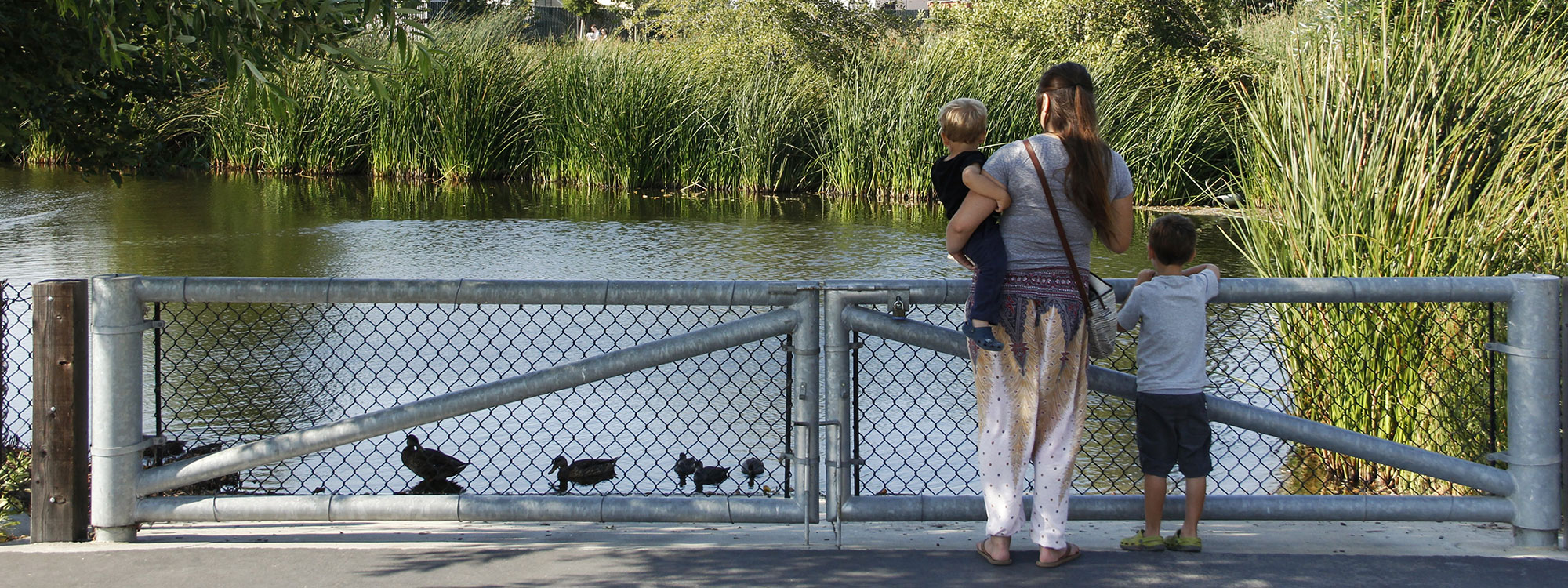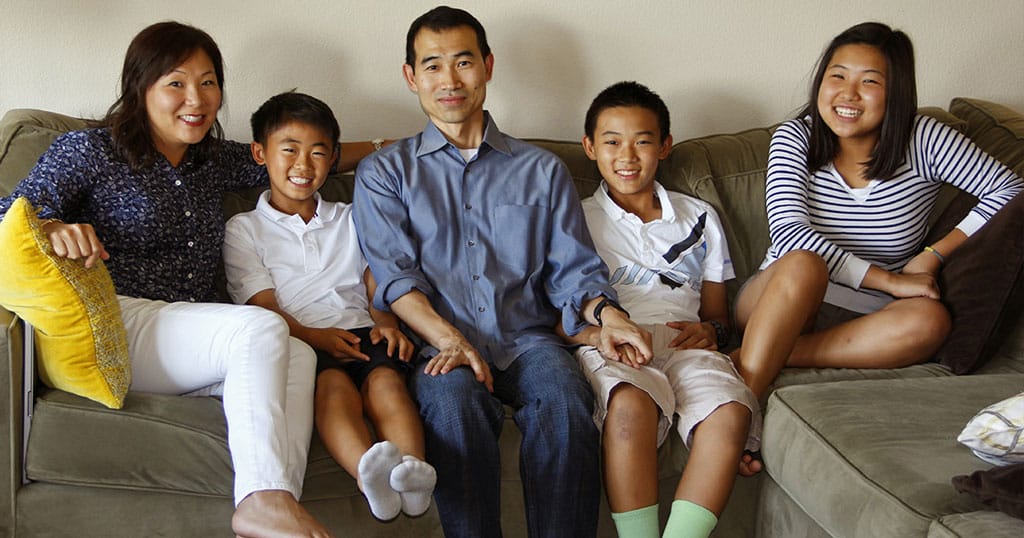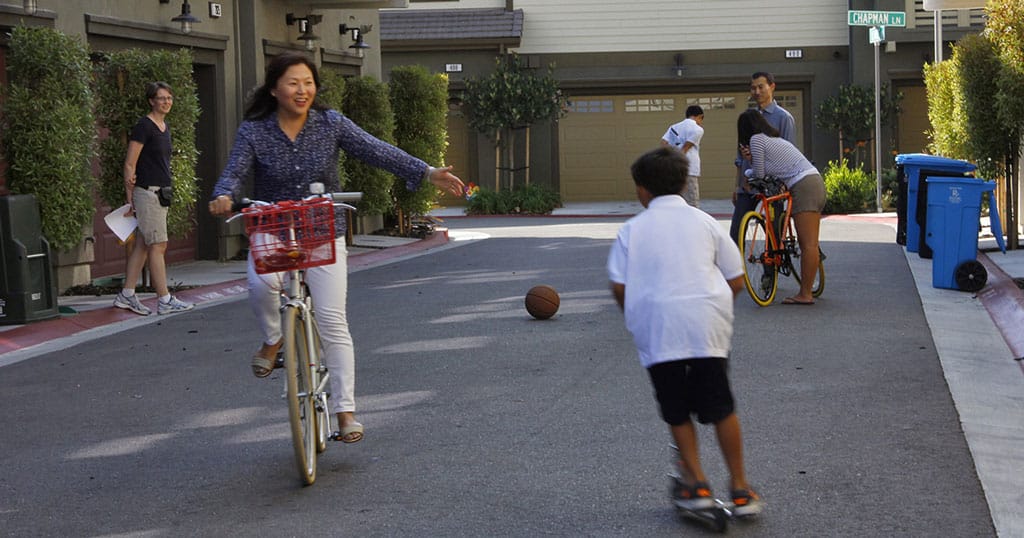The biggest threats to our region’s stability are our changing climate, and the growing number of residents burdened by rising housing costs. At Greenbelt Alliance, we envision a Bay Area of healthy, thriving, resilient communities made up of lands and people that are safe during climate disasters and recover quickly from wildfire, floods, and drought, where everyone is living with nature in new and powerful ways for generations to come. A key element of this is making sure we build more housing in existing communities so we can stop sprawl and protect our open spaces. Since the 1980’s Greenbelt Alliance has been actively promoting specific development projects and neighborhood plans through our endorsement program to show our support for development that creates resilient communities in balance with nature for current and future residents.
Greenbelt Alliance’s Development Endorsement Program
Greenbelt Alliance’s Climate SMART Endorsement Program allows us to voice our support for projects that reduce greenhouse gas emissions and increases our resilience to climate-related risks like flood, fire, and drought. By promoting infill development—new homes, shops and workplaces within existing cities and towns—we can help transform neglected sites into safe, inviting communities. We can create thriving, walkable neighborhoods with ready access to transit, and housing choices for all of the Bay Area’s people. And we can continue to protect the Bay Area greenbelt from sprawl development, preserving our open spaces for generations to come.
As a trusted advocate of both open spaces and thriving communities, Greenbelt Alliance is in a unique position to help infill projects move forward. The projects we endorse must meet our Climate SMART guidelines related to sustainability, mixed-use development, affordability, resilience, and transit-oriented development. The projects we endorse are designed to promote ecological health, open space, and water conservation while also encouraging physical activity, minimizing impacts on local traffic, and supporting our public transportation systems.
Endorsed Development: Bay Meadows
Bay Meadows, the community in San Mateo mentioned above, is an excellent example of climate SMART development. The city transformed the aging Bay Meadows horse-racing track into a thriving neighborhood within a stone’s throw of the Hillsdale Caltrain station. Built with both pedestrians and cyclists in mind, the development included 15-acres of public parks and a mini-main street. This community opens new opportunities for families across the income spectrum to afford homes in one of the nation’s most expensive housing markets.
These homes create desperately needed stability for the teachers, firefighters, and police officers that serve the city and region.
Greenbelt Alliance took an early and passionate interest in the project, supporting our endorsement of the plan with regular community outreach. Along with organizations such as The Sierra Club, Housing Leadership Council of San Mateo County, and the League of Women Voters, we rallied the public to speak out in favor of Bay Meadows.
Facing opposition from a group trying to use preserving the disused racetrack as a vehicle to prevent growth, we spoke at city council meetings to ensure the development moved forward. In the end, the council approved the project, and we defeated a petition that would have held a referendum to halt construction.
Life at Bay Meadows
So what has Bay Meadows brought to the area? Homes for people like Henry and Lauren Lee, who were some of Bay Meadow’s earliest residents. The Lees, along with their children Juliette, Noah, and Calvin, traded their house in Pleasanton for a Bay Meadows Townhome shortly after Henry started working at Stanford Medical School. He tried commuting for a bit, but decided “It was gonna be a little bit long to do long-term, so we looked for a place closer to my work.”
Leaving their backyard full of fruit trees for a walkable urban area was daunting at first, but the experience has been incredible so far. Buying into new construction let them avoid the pressure-filled bidding wars that are so common on the Peninsula, and gave them confidence in the long-term quality of their new home.
With your help, we can ensure that growth in Bay Area cities looks a lot like Bay Meadows.
Having the yard work taken off their hands didn’t hurt either, as Henry points out, “As much as we did enjoy our house in Pleasanton, I think neither Lauren nor I are very good DIY repair and maintenance people. Sometimes we enjoyed that aspect of things, but other times, we thought ‘oh, it would be nice to have a place that didn’t require so much upkeep, both the home and the yard.’” And with their children becoming involved in more and more extracurriculars, the low-maintenance simplicity of the townhouse simply fit better with their lifestyle.
The kids, as one might expect, had reservations. Calvin, who was 9 when they moved, missed the backyard and the basketball hoop in the driveway. But he quickly adjusted, and soon he and his brother were walking to the nearby courts almost every day. Even losing the fruit trees didn’t sting for long; Lauren took to the community garden soon after moving in and discovered that growing tomatoes was a lot more fun when you’ve got friends and neighbors to talk to while you work. As she said, “I feel like even though we had a garden in Pleasanton, you go out to the backyard and you’re just doing it by yourself… There’s something about being able to go and meet other people, and the atmosphere.”
With grocery stores, restaurants, and shops within easy walking distance, it might feel like there’s no reason to ever leave Bay Meadows. Access to public transportation was an essential part of their choice, to the degree that Lauren says, “I don’t think we could consider living here unless we had that option.” Henry’s used his bike and the local express stop to cut driving out of his commute entirely, and Lauren says he’s loving it “He would come back in the beginning and say ‘it’s so nice to end the day with a nice bike ride’.” And when the family takes the train to the city, everyone has their own Clipper card.
The Bay Area’s population is expected to grow by nearly a third by 2040, an increase of 2.1 million people. With a housing crisis already tearing through our region’s cities and towns, there’s no question that new homes will be built. What remains to be decided, however, is what those developments look like. Greenbelt Alliance has shown that we can contain all this new development within existing urban boundaries, rather than sprawling onto vital natural and agricultural lands. With your help, we can ensure that growth in Bay Area cities looks a lot like Bay Meadows, where the Lee’s, like so many other families, have discovered a new lifestyle, a strong community, and most importantly, a home.
Contact us to learn more about Greenbelt Alliance’s Endorsement Program.
Get Updates
Sign up for monthly updates to stay in the loop about smart growth projects happening around the Bay Area.
Photos by Carol Dula






